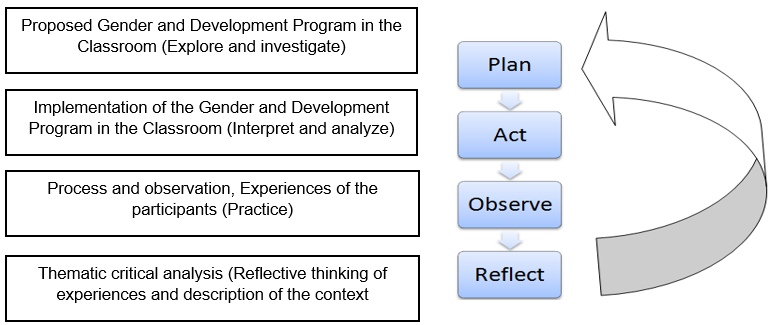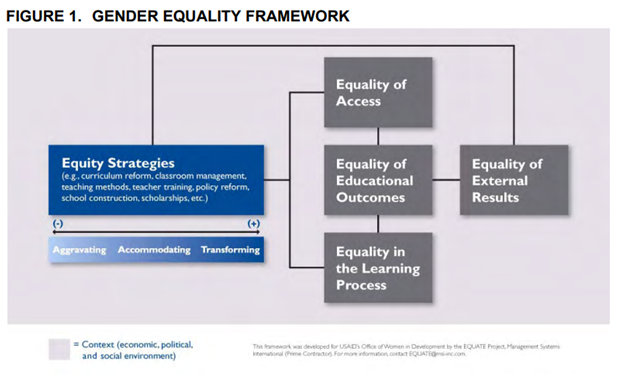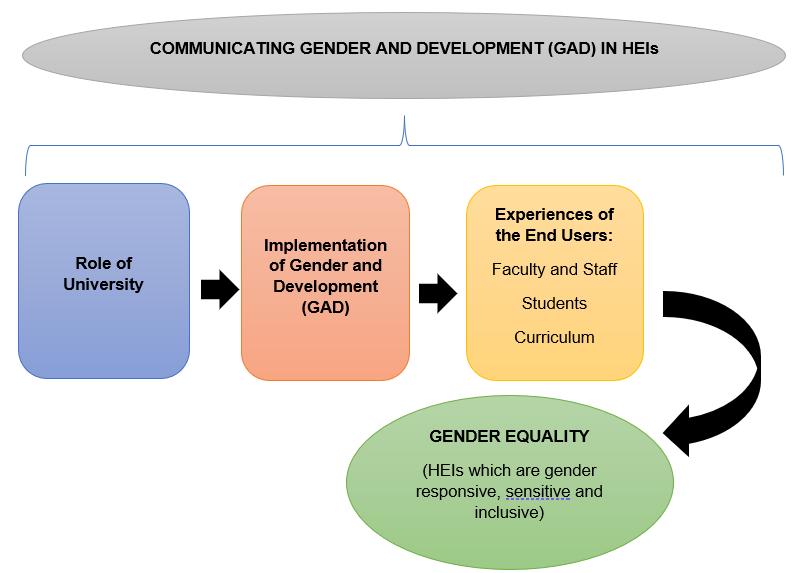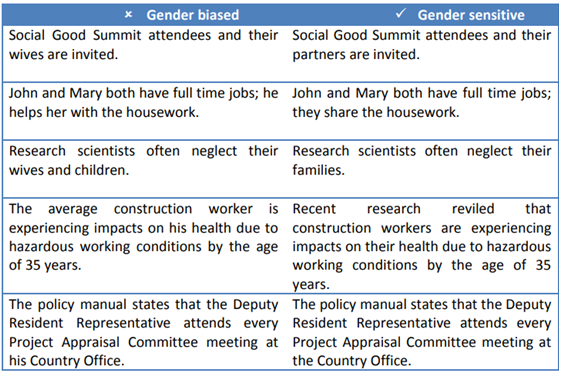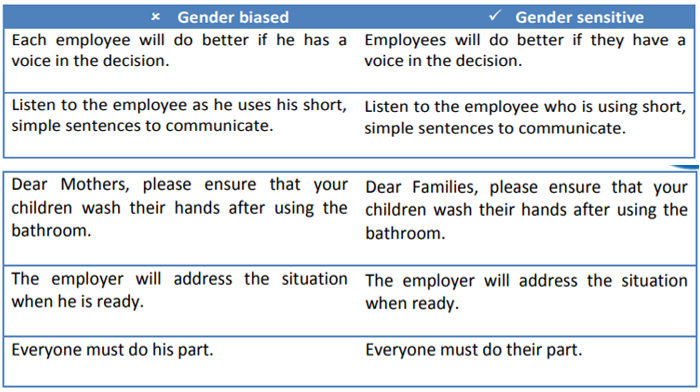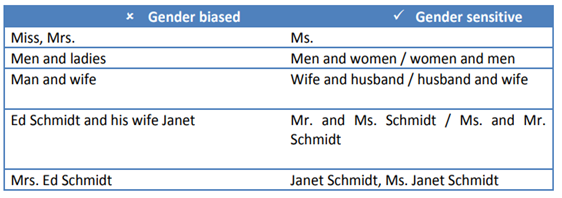Communicating the Implementation of Gender and Development (GAD): A Classroom Setting Experience in Higher Education Institutions (HEIS)
- Jordan D.C. Manuel
- 313-328
- Apr 29, 2024
- Education
Communicating the Implementation of Gender and Development (GAD): A Classroom Setting Experience in Higher Education Institutions (HEIS)
Jordan D.C. Manuel
DOI: https://dx.doi.org/10.47772/IJRISS.2024.804026
Received: 14 March 2024; Revised: 25 March 2024; Accepted: 30 March 2024; Published: 29 April 2024
BACKGROUND OF THE CASE
Schools most particularly the higher education institutions are influential agents of socialization. They play vital roles in how individuals make meaning of the world around others, significantly affecting how people perceive themselves and others, as well as differences across race, languages, disabilities, and gender. Because of this, schools have the responsibility to model, teach, and create conditions in which each child’s gender diversity is accepted and nourished. Thus, HEIs play a vital role in this context and increasingly realize their responsibility in the context of gender education.
Gender equity remains a pressing issue around the world. Despite progress made in recent decades, women still face significant challenges in achieving equal opportunities and outcomes compared to men. Gender equity in education means that males and females have equal opportunities in terms of economic, social, cultural, and political developments. Gender education has been greatly considered as prime foundation for social, economic and national development (Philippines Millennium Development Goals (MDG), 2015). For instance, the global gender pay gap persists, with women on average earning less than men for the same work. Women are also underrepresented in leadership positions across various sectors. These inequalities can have far-reaching consequences, impacting everything from economic development to individual well-being. Understanding the root causes of gender inequity and exploring potential solutions is crucial to creating a more just and equitable society.
In recent years, there has been growing interest in the concept of gender-free education. This approach aims to create a learning environment that transcends traditional gender roles and stereotypes. Today, to explore the potential benefits and challenges associated with implementing gender-free education is an utmost consideration for such undertaking. Gender-free education, for instance, has been a catch phrase in the Philippines this 21st century. Many initiatives and semi-governmental institutions were engaged in a debate whether education should be gender-free and discussed how this could be achieved. Since 2010, Commission on Higher Education (CHED) has been pushing for the agenda to mainstream gender and development in higher education. It has issued several landmark policy statements and documents, the most prominent of which is CHED Memorandum Order (CMO) No. 01, series of 2015 or the “Establishing the Policies and Guidelines on Gender and Development in CHED and HEIs.” That is why CHED mandated the integration of the idea, Gender and Development (GAD) in all the activities of all higher education institutions in the country including the instruction, research, extension and training and production which are the universities’ four-fold functions.
Gender and Development (GAD) is a plan for development perspective that recognizes the unequal status and situation of women and men in society. Women and men have different development needs and interests as a result of inequality, which is institutionalized and perpetuated by cultural, social, economic and political norms, systems and structures (Albaladejo, 2016).
In every institution, the Gender and Development approach focusses on the socially constructed basis on the differences between men and women and emphasizes the need to challenge existing gender roles and relations. The study of Talon (2016) found out that there is a great extent of gender inequity in the areas of curriculum, learning materials, physical facilities, programs, and projects. Furthermore, the study presents the proposed plan to initiate change for gender and development programs towards gender equity. Gender involves the differentiation attributed by a given culture to men and women in the following aspects: (1) social roles, (2) capacities, (3) traits and characteristics and (4) gender equality and non-discrimination. Sahin (2010) emphasized that gender equity in education means that males and females have equal opportunities that contributed to economic, social, cultural, and political developments. Imagine a classroom where students are encouraged to explore their interests and talents without limitations imposed by gender expectations. This is the promise of gender-free education, a growing movement that seeks to create a more inclusive and equitable learning environment for all.
Evidence-based and targeted communication is key to raising awareness of gender equality issues. If communication interventions to raise awareness of gender equality were to succeed, it was first necessary to unpack the perception and attitudes of stakeholders toward gender inequality and trace where these were coming from. (Asian Development Bank, 2018).
This case study was an attempt to analyze the implementation of gender and development (GAD) in the classroom setting in higher education institutions.
Objectives of the Paper
It is in this context that this study wanted to revisit the implementation of gender and development (GAD) experience in the classroom setting in higher education institutions. It also sought to analyze the role of communication in the implementation of gender and development (GAD) in a university guided by the key factors including the faculty and staff, students and curriculum. Thus, this program promotes equal opportunity to engage in the curriculum, learning materials, teaching-learning methodologies, and eliminate gender stereotyping among the 21st century learners.
Framework of Analysis
Figure 1. Conceptual framework showing the paradigm of the case study.
The framework of the study is anchored Kemmis and McTaggart (2000) stages in Action Research Spiral model. This framework may overlap and the initial plan may develop for continuous development that relates to the opportunity of analyzing the phenomenon in greater depth each time, consequently resulting in a greater level of understanding of the problem. It is in this light that this case study was conducted to explore the experiences of the participants in the gender and development in the classroom program. According to Kemmis and McTaggart (2000), action study is a participatory study consisting of a spiral process following self-reflective cycles:
- Planning in order to initiate change
- Implementing the change through action
- Observing the process of implementation and consequences
- Reflecting on processes of change and re-planning
This model is an advantage in exploring the phenomenon considering the high level of practical relevance of the study, can be used with qualitative data and gain in-depth knowledge about the problem.
THEORETICAL FRAMEWORK
This study is anchored to the Gender Equality Framework designed by United States Agency International Development. The Gender Equality Framework draws clear distinctions and demonstrates interrelationships among the concepts of gender parity, gender equity, and gender equality. In addition to drawing out the nuances between equity and equality, the framework reinforces other key concerns such as access, quality, continuity, relevance, and learning outcomes. The framework also emphasizes the relationships between and among students and teachers and boys and girls, implying the need to transform deeply ingrained behaviors and gender norms that have negative impacts on the aspirations and life choices of girls and boys (United States Agency International Development, 2008).
The four dimensions of gender equality in education include: equality of access, equality in the learning process, equality of educational outcomes, and equality of external results (Subrahmanian n.d.). Thus, by employing a gender equality framework, this study aims to contribute to a deeper understanding of communicating the implementation Gender and Development (GAD) approach in all higher education institutions and its impact on achieving gender parity. Through the lens of this Gender Equality Framework, this case analysis will illuminate the existing gender dynamics within the field of education and pave the way for the development of policies or interventions that promote equal opportunities and outcomes for all genders.
METHODOLOGY OF ANALYSIS
As a response to these demands to promote gender equity, responsiveness, and sensitivity, the Commission on Higher Education Memorandum No. 01, s. 2015 commits to integrating the principles of gender equality, gender equity, gender sensitivity, non-discrimination, and human rights, in the provision and governance of higher education.
Universities have a critical role to play in fostering a more equitable and inclusive society. While strides have been made, gender inequality and a lack of broader development inclusion persist within these institutions. This calls for a multifaceted approach that considers both gender and broader development issues. As shown in the above figure, this case study was an attempt to analyze the implementation of Gender and Development (GAD) in a higher education institution wherein it sought to identify the role of the university in the implementation of Gender and Development (GAD) guided by the experiences of its key factors and end-users including the faculty and staff, students and the curriculum itself. Thus, this case study promotes gender equal opportunity to engage in the curriculum, learning materials, teaching-learning methodologies, and eliminate gender stereotyping among the 21st century learners.
RESEARCH DESIGN
The researcher used a case study design where this is an in-depth study of a particular research problem rather than a sweeping statistical survey or comprehensive comparative inquiry. It is often used to narrow down a very broad field of research into one or a few easily research able examples. The case study research design is also useful for testing whether a specific theory and model actually applies to phenomena in the real world. It is a useful design when not much is known about an issue or phenomenon.
In the context of this study, it examined the implementation of a Gender and Development (GAD) approach in higher education institutions. The findings illuminate the institution’s successes in promoting gender-inclusive policies, fostering awareness among faculty and students. However, challenges such as limited resources, resistance to change highlight the need for capacity building programs, continuous monitoring and evaluation, and designing a communication material for the implementation of this approach. By addressing these challenges and building upon existing strengths can serve as a model for other institutions seeking to promote gender equality within higher education.
Highlight of the Case
The Gender and Development (GAD) approach is a framework used to promote gender equality and achieve inclusive development. It emerged in the 1980s as a critique of earlier approaches that focused solely on integrating women into existing development models. Communicating gender and development (GAD) is a development approach that seeks to equalize the status and condition of and relations between men and women by influencing the processes and evaluation, so that they would deliberately address the gender issues and concerns affecting the full development of women. This approach seeks not only to integrate women into the development process but also to continually search for new and innovative initiatives that will help transform unequal social/gender relations into creative opportunities that would equally benefit both men and women (DBM-NEDA-NCRFW Joint Circular 2004).
In the pursuit of learning in all higher education institutions in the Philippines, universities and colleges in the country should implement and conduct this development approach in all their academic programs including all their undertakings in their different functions that will enhance and further improve gender equity promotion. One example of its integration is through the provision of a Gender-Responsive Curricular Program (GRCP) as reflected in the CHED Memo No. 01 s. 2015. This is to establish and utilize a curriculum that shall prevent all forms of gender-based discrimination in instruction, research, extension, as well as in marketing methods and the use of promotional materials. It ensures the promotion of women’s empowerment to be undertaken through the provision, availability, and accessibility of opportunities, services, and observance of human rights which enable women to actively participate and contribute to the political, economic, social, and cultural development of the nation (CHED). Thus, this paper examines to revisit the implementation of GAD experience in the classroom setting of higher education institutions in the Philippines.
PRESENTATION, ANALYSIS AND DISCUSSION
Role of University in Communicating the Implementation of GAD
Academic institutions like State Universities and Colleges (SUCs) play a vital role in addressing gender disparity in the country. As Fraser argues, the socio-economic and cultural injustices always need to be considered. Academic institutions have to shed off the more traditional stance usually taken that tends to exclude women’s participation. They should offer institutional support to women academics and other male colleagues in their efforts to promote gender equality and women’s human rights if we are to integrate gender equality as an essential element in development strategies (Pulmano, 2016).
Moreover, the Commission on Higher Education (CHED) approved a Special Order creating a CHED GAD Focal Committee and Secretariat which initiated GAD programs of the commission. Thereafter, the commission approved the constitution of GAD Focal Committee on the set of guidelines and policies to be followed by Higher Education Institutions or HEIs in the implementation of GAD projects, activities and programs in their respective offices. With assigned agency overseer for every SUCs or HEIs such as, the Commission on Audit and the Philippine Commission on Women.
According to Delavin (2017), programs must be identified along gender mainstreaming for the attainment of gender equality in the college using the framework. Continued support from the administration is necessary for its implementation since Commission on Higher Education (CHED) and Philippine Women Commission is pushing the exposure of Gender and Development in all Higher Education Institutions as well as other Government Offices.
Similarly, in all aspects of academic learning in most of the universities in the Philippines, the researcher investigates the following key aspects to be considered:
Gender Equity:
The gender pay gap often extends to faculty salaries, with women underrepresented in higher-paying fields like STEM.
Unequal representation in leadership positions and student enrollment in certain programs highlight the need for targeted interventions.
Development Inclusion:
Universities may not fully consider the needs of students from diverse backgrounds, including those with disabilities, socioeconomic disadvantages, or belonging to LGBTQ+ communities.
A broader lens on development ensures all students have the opportunity to thrive.
Implementation of GAD
In the Philippines, the pursuit of gender equality and women’s empowerment has achieved major inroads in the past decades. The gender responsive laws, policies, and programs in place and the institutional and enabling mechanisms in national government agencies and local government units are a result of the continuing advocacy of government and its partners among lawmakers, people’s organizations, civil society groups, and the academe (Women’s EDGE Plan 2013–2016, 2014).
On the study conducted by Pulmano (2016), it was revealed that State Universities and Colleges should formulate their GAD vision to provide direction and guidance in the implementation process. The GAD units should be provided with human and material resources by the administration to facilitate the program implementation process. Client-focused activities should also be undertaken to include the making of modules on GAD,
revision of policies and procedures for women’s full access to delivery of goods and services. Focal persons should be provided with trainings/seminars to enhance their capabilities in the implementation of GAD PAPs and ensure full utilization of the mandated 5% budget from the General Appropriations Act. Existing policies should be regularly reviewed to address prevailing gender inequalities and to make sure that institutional programs and projects are gender responsive. Focal persons should encourage the student, faculty and non-teaching organizations to include GAD concerns in their action plan. This is to establish connectivity and partnership in the conduct of GAD projects and activities. Information dissemination procedures to educate the community about GAD concepts should be intensified to include the use of various means like television, radio, and publications issued locally and nationally.
It is therefore imperative for the government to perform its role, as part of its duly mandated authority, to secure development for its citizens and to ensure equitable distribution of resources in a society. It must protect people’s rights and create opportunities so they can develop their capacities and individual strengths. It can also initiate change toward a gender responsive development. For a public entity like a state higher education institution, administrative officials should provide a monitoring and evaluation scheme to enforce its compliance with the mandated GAD provisions (Sumadsad & Tuazon, 2016). By prioritizing gender and development inclusion, universities can become engines for positive change. They can equip students with the knowledge and skills to challenge inequalities and build a more just and sustainable future.
To take part in implementing Gender and Development (GAD) in all areas of academic learning in the Philippines, the researcher had to come up with the following considerations:
Core Principles:
- Focus on relations: GAD goes beyond just women’s needs and analyzes the social structures and power dynamics that create gender inequality. It considers the roles and needs of both men and women.
- Transformation: GAD aims not just for integration but for transformation. It seeks to change policies, institutions, and cultural norms that perpetuate gender biases.
- Multi-level approach: GAD advocates for interventions at both practical (e.g., skills training for women) and strategic levels (e.g., policy changes).
- Participation: Meaningful participation of both women and men is crucial for successful implementation of GAD initiatives.
Benefits of the GAD approach:
- Promotes equity: By addressing the root causes of gender inequality, GAD paves the way for a more just and equitable society.
- Empowers women: Increased access to resources, education, and decision-making power improves women’s well-being and societal contributions.
- Leads to inclusive development: Development efforts that consider the needs of both men and women are more likely to be sustainable and reach all segments of society.
Challenges of implementing GAD:
- Resistance to change: Existing power structures might resist efforts to dismantle gender biases.
- Lack of resources: Effectively implementing GAD often requires dedicated funding and personnel.
- Measurement and evaluation: Measuring the impact of GAD initiatives can be complex.
Overall, the GAD approach offers a valuable framework for achieving gender equality and inclusive development. By addressing the underlying social structures and promoting participation, this approach can empower individuals and create a more just and equitable world.
Experiences of the End-Users in the Implementation of GAD in the Classroom Setting
Faculty and Staff
Talon et al, (2019) revealed that teachers play a major role in creating gender parity school environments that are free of gender bias and in encouraging both male and female to reach their highest potentials. The gender sensitive teachers incorporate these strategies and actions in gender and development in the classroom program:
- Calling male and female in the recitation fairly.
- Correcting opposing language used that restricts gender.
- Making proper instructional materials and strategies with equal representation of males and females.
- Bring forth messages with gender sensitivity by parting the last words before class dismissal.
- Activating togetherness both male and female in the activity.
- Treating all individuals with motivating words and sense of parity.
- Emphasizing that there is an equal opportunity in skill development.
- Designing classroom and laboratories with gender sensitivity graphics and structuring.
- Adhering the No to competition against male and female and No to bullying of gender preferences.
But similar to the development of our physical bodies, cognizance of gender identity evolves with time, and some children find it very difficult to reconcile their given gender and their gender identity (Rafferty, 2018). It’s also important for teachers to understand gender expression (how people externally communicate their gender identity through physical expressions, such as clothing and hairstyle, and social expressions, like their names and pronoun choice). Students also navigate gender roles—the behaviors, attitudes, and expectations associated with being either male or female. These differences have to do with physical behaviors, styles of social interaction, academic motivations, behaviors, and choices. Teachers sometime unconsciously influence gender role differences through the responses and choices they make for and on behalf of their students. For example, teachers might assign roles to students in role plays based on their biological gender or influence student dress codes.
Students
The gender and development in the classroom emphasizes students’ development that focuses on the holistic approach and gender equality in accordance with the learner’s needs regardless of their gender and status.
Hernandez and Cudiamat (2017) reiterates that the gender-responsive teaching approach be integrated into the classroom to gender equality and contribute to the improvement of learners’ academic performance. Aikman et al, (2005) stressed that unless a focus is made toward the system of education itself, not only the number of girls compared to the number of boys in school, but what is taught and how it is taught to the two groups considering gender equity in instructional supervision. Future directions for the field of gender development, in particular, should highlight areas in which the gender and development program could play a role in promoting more diversity in the delivery of lesson contents, pedagogical strategies, and age-appropriate awareness-raising activities on gender and development advocacy (Zosuls, 2011).
Developmental factors may limit the extent to which biological predispositions can be expressed, change the way learners are cognitively capable of thinking about gender, and expose them to varying social influences (Martin and Ruble, 2010). The form of gender typing that is paramount may vary at different phases of life, and different combinations of biological, cognitive, and socialization processes could contribute to individual differences in gender typing (Martin and Ruble, 2010).
Consistency in assessing the needs of the students should be considered in creating a policy for gender-fair education. Tracking learners’ profile, monitor and evaluation of gender and development in the classroom programs would help to fully address gender discrimination and disparities. It entails a consistent and systematic response to the differences of the learners with a view of addressing stereotyping.
CURRICULUM
Enduring gender issues has changed because of giving equal opportunity to all learners that are embedded in the curriculum, instructional materials, and strategies. It drives from nurturing the environment that is gender-fair in addressing gender-based barriers such as discrimination and bullying. Mainstreaming gender in education promotes stimulating classroom structuring that is more sensitive to gender. Teachers have implemented a holistic approach by contextualizing and localizing learning resources integrating gender-sensitive of core messages and key concepts of learning materials used. They were able to develop and promote gender-responsive learning resources based on the requirement of the curriculum, social content guidelines on stereotyping and use of gender-fair and inclusive language, positive images, and messages.
Seemingly, teachers ensure the formative and summative assessments at the school level and any competitions (e.g., contests, quiz bees) are gender-responsive and culture-sensitive for all learners and integrated gender development program in the classroom in contextualizing lesson plans/syllabi of instructions and utilization of technology-mediated instructional materials across learning activities. Moreover, contextualization creates inclusive atmosphere to all learners which improved their efficiency in various learning activities and promotes more gender-responsive in a social environment. Thus, to enhance skills in the delivery of pedagogic instructions, integrating gender and development in the implementation of the curriculum was evident to the teachers (Talon et al, 2019).
Teachers’ actions in classroom management, instructional materials and activities ensure gender equality and equity. The gender and development in the classroom program was implemented through differentiation of developmentally appropriate learning activities to address learners’ gender needs, strengths, interests, and experiences. Teachers were able to observe the following pedagogic approaches:
- Emphasizing the male and female or female and male in all parts of the everyday lesson from the start to the end in writing the daily lesson log or daily lesson plan.
- Attentiveness in calling the male and female simultaneously alternately.
- Presenting contextualized instructional materials/aid by both males and females in every slide and in the video.
- Equal representation of male and female in groupings and in leading the group reporting.
- Posting pictures with male and female together in classroom structuring and school facilities.
- Use of “Gender parking words” after generalization, that every male and female in all aspects are equal in all aspects of life.
- Collaborative work with equal distribution of males and females.
To sum it up, addressing these issues requires a multi-pronged approach which includes the following:
- Policies and Procedures:
- Implementing clear policies against gender discrimination and harassment.
- Establishing procedures for addressing accessibility needs and fostering inclusion for diverse student populations.
- Curriculum Reform:
- Integrating gender studies and critical perspectives on development across disciplines.
- Encouraging research that tackles gender disparities and promotes inclusive development practices.
- Campus Culture:
- Creating a climate of respect and acceptance through training programs and awareness campaigns.
- Establishing support structures for students from marginalized backgrounds.
The Role of Communication in the Implementation of GAD
On the book entitled “Gender Responsive Communication for Development: Guidance, Tools and Resources”, published by UNICEF (2018), it was mentioned that communication can be pivotal in promoting gender equality, by transforming attitudes and norms that perpetuate gender-based discrimination. Communication is also closely linked to empowerment as it contributes to building confidence and skills to negotiate choices and demand for equal access to and control of resources. Complex constructs such as gender equality, social norms and empowerment are not always easy to measure, but there is a wealth of both qualitative and quantitative data on the effectiveness or impact of communication interventions in changing gender norms. For instance, a systematic review of changing discriminatory norms for adolescent girls shows strong evidence to support that communication programs are effective ways to challenge gender-discriminatory attitudes and practices (Marcus & Page, 2014). Though this review focused on adolescent girls, many of the findings apply to gender issues and women and girls in general.
Gender and communication are areas of study in the communication discipline in which the focus is on how verbal and nonverbal communication affect and are affected by gender. A common misconception about gender and communication is that it is the study of differences in the way men and women communicate. Of course, some research has focused on those differences; however, the definition in this entry is broader and more encompassing. To best understand the definition of gender and communication, it is important to distinguish between the terms sex, gender, and sexuality. These terms are often used interchangeably; however, there is a distinct difference. Sex refers to biology—how one is born: male, female, or intersex. Gender is socially constructed; that is, communication practices, etc.
That’s why according to the book entitled, “Principles of Gender-Sensitive Communication: UNDP Gender Equality Seal Initiative” (2006), language plays a critical role in how we interpret the world, including how we think and behave. It enlisted 6 principles of Gender-Sensitive Communications such as:
1. Ensure that women and men are represented – It is important to ensure that quotes from both men and women are included in press releases, stories and other communications.
2. Challenge gender stereotypes – Our use of language often reinforces gender stereotypes and assumptions about women and men are often formed through such gender stereotypes. It is important to avoid using these, as gender stereotypes limit and trivialize both women and men, presenting inaccurate images.
3. Avoid exclusionary forms – Exclusionary forms of language indicate the use of “he”/“his” when referring to both a female and male, which excludes females. One can use “he” and “she” to be inclusive, or use the plural ‘they’ to avoid using any gendered pronouns.
4. Use equal forms of address – Addressing women by their marital status is an old practice dating back to the 1700s. Women were often called by their husband’s full name, for example: ‘Mrs. John Smith.’ Nowadays however, this practice is no longer appropriate. While the address ‘Mrs.’ implies that the woman is married, ‘Ms.’ emerged in the 1940s as an alternative to ‘Mrs.’. Today, the ‘Ms.’ form is universally accepted and a good practice to adopt.
5. Create a gender balance – In written and oral communications, it is important to be mindful of the gender implications of generic terms. Generics are nouns and pronouns intended to be used for both women and men.
6. Promote gender equity through titles, labels, and names – Titles for people and occupations often reflect inequitable assumptions about males and females; gender-sensitive language promotes more inclusive and equitable representations for both females and males.
Thus, this makes sense of the use and significance of Gender-Fair Language (G-FL) which minimizes unnecessary concern about gender in the teacher’s subject matter, allowing both the teachers and students to focus on what people do rather than on which sex they happen to be. According to Sczesny et al (2016), Gender-fair language (GFL) aims at reducing gender stereotyping and discrimination. Two principal strategies have been employed to make languages gender-fair and to treat women and men symmetrically: neutralization and feminization. Neutralization is achieved, for example, by replacing male-masculine forms (policeman) with gender-unmarked forms (police officer), whereas feminization relies on the use of feminine forms to make female referents visible (i.e., the applicant… he or she instead of the applicant… he). By integrating research on (1) language structures, (2) language policies, and (3) individual language behavior, they provide a critical review of how GFL contributes to the reduction of gender stereotyping and discrimination. Their review provides a basis for future research and for scientifically based policy-making.
The Crucial Role of Communication in Implementing GAD in Philippine Higher Education Institutions
The Gender and Development (GAD) approach is vital for creating a more equitable and inclusive environment within Philippine higher educational institutions (HEIs). Effective communication plays a central role in its successful implementation. Here’s how communication facilitates the GAD approach in Philippine HEIs:
Awareness Raising:
Communication campaigns can be used to raise awareness about gender biases, stereotypes, and existing inequalities within the university. This could involve workshops, seminars, and targeted information dissemination.
Policy Implementation:
Clear communication is crucial for disseminating and explaining GAD policies, procedures, and guidelines to faculty, staff, and students. This ensures everyone understands their roles and responsibilities in promoting gender equality.
Building Consensus:
Open communication allows for dialogue and exchange of perspectives on GAD initiatives. This fosters a sense of ownership and encourages participation from all stakeholders, including faculty, staff, and student organizations.
Behavior Change:
Effective communication strategies can promote positive behavior change and a more inclusive campus culture. This could involve campaigns against gender-based violence, promoting respect for diversity, and creating safe spaces for reporting incidents.
Monitoring and Evaluation:
Communication is essential for collecting feedback on the effectiveness of GAD initiatives. This allows for adjustments and improvements based on the experiences of faculty, staff, and students.
Furthermore, the following are some specific communication channels that can be leveraged in Philippine HEIs:
Official university publications: Websites, newsletters, and student handbooks can be used to disseminate information on GAD policies and activities.
Social media campaigns: Platforms like Facebook and Twitter can raise awareness about gender equality issues and promote events or initiatives.
Workshops and trainings: Interactive sessions can equip faculty and staff with the knowledge and skills to integrate GAD principles into teaching and administrative practices.
Student-led initiatives: Empowering student organizations to organize workshops, talks, and awareness campaigns fosters a culture of ownership and engagement.
By employing effective communication strategies, Philippine HEIs can create a more fertile ground for the GAD approach to flourish. This paves the way for a more inclusive and equitable learning environment where all students, regardless of gender, can thrive.
Implications to Society
The school community is fairly cognizant of existing legal bases in providing equal opportunities for both genders. However, information on government agencies that are mandated to implement Gender and Development (GAD) as well as concerns on gender equality and women empowerment still need to be disseminated more. Nonchalant attitudes of an ordinary Filipino on gender issues is due to the fact that gender inequality, while it still exists in the society, is never a serious problem in the country. In this regard, full awareness of the school community should be given more emphasis in as much as it is in a viable position to stimulate wider discernment of Gender and Development through in-depth academic discussions and may take an active participation in local and national gender-equality advocacy, seminars and fora.
The GAD programs, with the cooperation of concerned agencies, should be strengthened and involvement of communities should be prioritized. A wider information dissemination can be attained through the use of print and nonprint forms. Classroom discussions as well student organizations’ participation in GAD activities could also facilitate school community awareness. The government should be serious enough in carrying out the “Harmonized Gender and Development Guidelines for Project Development,
Implementation, Monitoring and Evaluation.”
The establishment of network and linkages among constituents working on gender concerns to share information and strategies, and creation of opportunities for collaboration through peer-peer exchanges and exposure visits are instruments that will further improved GAD awareness among the populace. Sustainability of the GAD program should be ensured and the authorities should give full support to GAD-initiated activities. And within the school, a mechanism for consultation with personnel, both teaching and non-teaching, and students, for decision-making should be established. Monthly meetings with the concerned stakeholders pertaining to GAD programs, activities and issues would also lead to raise their level of awareness and involvement as well.
In summary, the researcher has come up with the idea that implementing the Gender and Development (GAD) approach in higher educational institutions (HEIs) has the potential to create a ripple effect of positive change throughout society. Here’s a breakdown of some key societal implications:
Increased Gender Equality:
HEIs are breeding grounds for future leaders, professionals, and changemakers. By integrating GAD principles into their education, students develop critical thinking skills to challenge gender stereotypes and advocate for equality.
This translates into a more equitable society where both men and women have equal opportunities to participate in all spheres of life.
Empowered Women and Girls:
The GAD approach within HEIs encourages policies and practices that support women’s access to education, leadership roles, and research opportunities. This empowers women to reach their full potential and contribute meaningfully to society.
Additionally, increased awareness about gender issues within HEIs can inspire younger girls to pursue higher education and challenge traditional gender roles.
Inclusive Workplaces and Leadership:
Graduates from HEIs with a strong foundation in GAD principles are more likely to promote gender equality in their workplaces. This leads to a more inclusive work environment where both men and women have equal opportunities for advancement.
Furthermore, a focus on GAD in HEIs can pave the way for a future with more women in leadership positions across various sectors.
Societal Development and Progress:
When women are empowered and have equal opportunities, they contribute more significantly to the economy and social development. This leads to overall societal progress and a more just and equitable world.
Additionally, addressing gender inequality fosters peace and stability within communities.
Challenges and Considerations:
Implementing GAD in HEIs requires a long-term commitment from leadership and a shift in institutional culture.
Ensuring effective communication and addressing potential resistance to change are crucial for success.
Overall, implementing the GAD approach in HEIs presents a powerful opportunity to create a more equitable and inclusive society for all. By empowering women and promoting gender equality, this approach lays the groundwork for a brighter future for generations to come.
REFERENCES
- Aikman, S., Unterhalter, E., and Challender, C. 2005. The Education Millennium
- Development Goals (MDG): Achieving Gender Equality through Curriculum and Pedagogy Change. In C. Sweetman (Ed.), Gender and the Millennium Development Goals. Oxford, UK: Oxfam GB. 3.
- Albaladejo, Elmer M. 2016. Implementation of Gender and Development among Higher
- Education Institutions: Input to GAD Enhancement Program. Retrieved from: https://www.researchgate.net/publication/304495795 Implementation of Gender and Development among Higher Education Institutions Input to GAD Enhancement Program
- Asian Development Bank and National Committee on Gender Equality. 2018. Public Communication Strategies for Awareness Raising on Gender Equality: (i) National Multi-media Campaign Strategy; and (ii) Local level Communication Campaign Strategy. Ulaanbaatar. Retrieved from: https://development.asia/case-study/communication-strategies-enforce-gender-equality-legislation-mongolia
- CHED. 2015. CHED Memorandum Order (CMO) No. 01, series of 2015 or the “Establishing the Policies and Guidelines on Gender and Development in CHED and HEIs.” Retrieved from: https://ched.gov.ph/wp-content/uploads/2017/10/CMO-no.-01-s.-2015.pdf
- Delavin, E. 2017. Gender and Development Implementation in Masbate State College, Philippines. Asia Pacific Journal of Multidisciplinary Research Vol. 5 No.3, 130-136 August 2017 P-ISSN 2350-7756 E-ISSN 2350-8442. Retrieved from: http://www.apjmr.com/wp-content/uploads/2017/07/APJMR-2017.5.3.15.pdf
- Department of Budget and Management (DBM), NEDA and NCRFW. 2004. Joint Circular No.2004-1. Office of the President-NCRFW. Manila, Philippines. May 2004
- Hernandez, T. A and Cudiamat, A. A. 2017. Integrating Gender and Development (GAD) in the Classroom: The Case of Lucsuhin National High School, Department of Education Philippines. Retrieved April 10, 2020 from https://knepublishing.com/index.php/KneSocial/article/view/2430.
- Kemmis, K. and McTaggart, R. 2000. Participatory Action Research, in N. Denzin and Y. Lincoln. (eds.), Handbook of Qualitative Research. London: Sage.
- Martin, C.L. and Ruble, D. N. 2010. Patterns of Gender Development. Annu Rev Psychol. 2010; 61: 353–381. doi: 10.1146/annurev.psych.093008.100511. Retrieved April 5, 2020 from https://www.ncbi.nlm.nih.gov/pmc/articles/PMC3747736/.
- Millennium Development Goals. (2015). Philippine Education for All 2015: Implementation and Challenges. Retrieved March 20, 2020 from http://www.unescobkk.org/fileadmin/user upload/efa/EFA MDA/National EFA MDA Reports/Philippines EFA MDA FINAL.pdf.
- Pulmano, R. 2016. Implementation of the Gender and Development Program of State Universities and Colleges In Region III: An Evaluation. International Journal of Education and Research. Vol. 4 No. 5 May 2016. Retrieved from: https://www.ijern.com/journal/2016/May-2016/15.pdf
- Rafferty, J. (2018). Ensuring comprehensive care and support for transgender and gender-diverse children and adolescents. Journal of the American Academy of Pediatrics, 142(4), 2018–2162. DOI: https://doi.org/10.1542/peds.2018-2162
- Sahin, E. 2014. Gender Equity in Education. Open Journal of Social Sciences, 02(01), 59-63. Retrieved April 5, 2020 from http://doi.org/10.4236/jss.2014.21007.
- Sczesny, S. et al.2016. Can Gender-Fair Language Reduce Gender Stereotyping and Discrimination? Frontiers in Psychology. Retrieved from: https://www.frontiersin.org/articles/10.3389/fpsyg.2016.00025/full
- Subrahmanian, R. (n.d.). “Gender equality in education: Definitions and measurements; Background paper for UNESCO GMR 2003-043”. n.p. http://portal.unesco.org/education/en/ file download.php/daa3a7d75587a9ae6 c90e68d961a5229 Gender+equality +in+Education.doc.
- Sumadsad, C.R. & Tuazon, A.P. 2016. Gender and Development (GAD) Awareness in a Higher Education Institution. International Journal of Educational Science and Research (IJESR) ISSN(P): 2249-6947; ISSN(E): 2249-8052. Vol. 6, Issue 3, Jun 2016, 75-86. Retrieved from:
- Talon, R. B. (2019). Gender Inequity in Technical Vocational Livelihood (TVL) Track of
- Senior High School Basic Education: Basis for Gender Development Program. Schools Division Office of Imus City. I Dream Jouranl, Vol 3, Issue 1.
- UNDP. 2006. Principles of Gender-Sensitive Communication: UNDP Gender Equality Seal initiative. Retrieved from: www.undp.org.
- UNICEF. 2018. Gender Responsive Communication for Development: Guidance, Tools and Resources. UNICEF South Asia, 2018. Retrieved from: https://www.unicef.org/rosa/media/1786/file
- USAID. 2008. Gender Equality Framework. Retrieved from:https://pdf.usaid.gov/pdf docs/Pnadl861.pdf
- Women’s EDGE Plan 2013–2016 (2014). Women’s Empowerment, Development and Gender Equality Plan 2013-2016. Philippine Commission on Women and UN Women, March 2014
- Zosuls, K. M., Miller, C. F., Ruble, D. N., Martin, C. L., and Fabes, R. A. Fabes. (2011). Gender Development Research in Sex Roles: Historical Trends and Future Directions Sex Roles. 64(11-12): 826–842. Retrieved April 5, 2020 from http://doi.org/10.1007/s111990109902/https://www.ncbi.nlm.nih.gov/pmc/articles/PMC3131694/.

